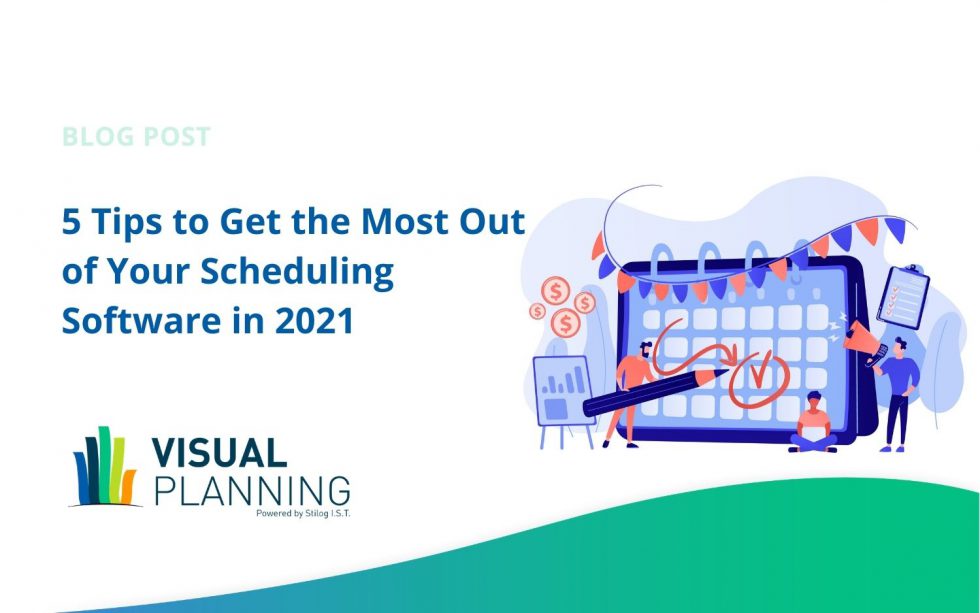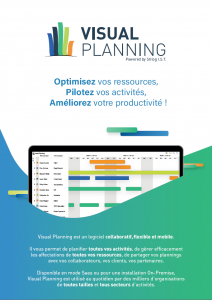Whether you’re shopping for a new employee scheduling software or just want to put your existing production scheduling software to better use in the New Year, it can take a bit of work to ensure you get the biggest benefits from these tools. A proactive approach on your part, though, can make a huge difference in what you get out of scheduling software. Check out these five tips for getting the most out of your scheduling technology in 2021.
1. Download Updates and Set a Schedule to Do So Regularly
If you’re using an on-premises option, staying on schedule with updates is imperative to success with scheduling software. Missing updates can mean losing out on new features, working in older versions that aren’t supported (which can cause issues if something goes wrong) or even leaving your business open to security risks.
If it’s been a while since you last downloaded updates, go ahead and do so now. Then, set a recurring appointment on your calendar. You might want to check for updates at least once a week. A good time to do this is at the end of the day or week when everyone has logged off for the day. Most people install updates overnight to avoid causing problems for users who might be in the system at the time. You might also want to let employees know when the scheduled updates happen so they’re aware the system might be down or experience some short-term hiccups during that time and can plan accordingly.
For those who opt for cloud-based software, whether or not you need to remember to perform updates depends heavily on your vendor. Ask the vendor whether software updates occur automatically and when they happen. If you have to watch for notifications and press a button to launch updates, follow the tips above.
2. Talk to Employees to Get Perspective from the Trenches
Supervisors, managers and executives often make the mistake of ignoring wheels that aren’t squeaking. If employees haven’t pointed out specific issues, it’s tempting to think that everything is running smoothly and that your scheduling software and processes are working great for all.
But that might not be the case. A lot of times, employees take it upon themselves to find a workaround to an inconvenience, so they could be “fixing” things without management even realizing it. Some reasons employees might do this include:
- They don’t feel heard. For whatever reason, if your staff doesn’t feel like they’re taken seriously when they bring up problems, they’ll simply stop doing so.
- They don’t believe it will matter. If staff is constantly bringing up problems that are ignored, they will stop making the effort to point them out. This is especially if they aren’t given an explanation as to why those problems weren’t addressed.
- They just don’t have time. Staff might intend to point out issues, but at the end of the day, they could be too tired or out of time to do so. The issue is forgotten until it comes up again and the team member has to work around it.
If you approach your team members and ask about their experiences — or even work alongside them for a while to see what they’re actually doing — you can break down some of these barriers and understand where your scheduling software might not be working well. Then, you can work to fix those issues.
3. Conduct an Annual Data Audit
The best scheduling software uses data you build over time to make scheduling and related tasks easier, faster and more accurate.
Consider this example: You might have entered data about all your team members and their skill sets and experience. Then, you could enter data about the types of jobs your company does. Each time a team completes a job, they enter information about that job and how much time it took them to complete it.
At some point, the system has a lot of data about exactly how long each type of task might take depending on various factors, such as which team members are handling it or what level of experience the person has. This type of data can play a vital role in helping you ensure that schedule estimates are as accurate as possible, which helps you plan well for the future.
But this is only true when the data in the system is accurate. A data audit is the process by which you consider all the information in the system and take time to clean up anything that’s no longer accurate. You might archive employees who no longer work for you, upgrade experience levels and credentials for those who have obtained new training and add new types of jobs and skills.
Obviously, you should be updating system information on a regular basis. If someone gets a new credential, HR should enter that information as quickly as possible. An annual audit isn’t about entering all that information for the first time — it’s about correcting errors, adding missing data and removing issues that didn’t get caught in normal daily processes.
4. Audit and Refresh Training Manuals and SOPs
Data isn’t the only thing you should audit. It’s a good idea to do a periodic run through all your documentation, including standard operating procedures and training manuals. Training materials should be updated at least once a year because you want to ensure that you’re giving your employees the most up-to-date instructions and foundation.
If you have training staff, have them work with one or two subject matter experts (e.g. the people who do the actual job on a daily basis). Be sure to choose top employees who normally perform well so you know they’re providing the best tips and information. These teams can update the training materials with new instructions and correct anything that might be confusing or not relevant to current processes.
Updating all SOPs at the same time can be a huge project. Instead, consider going through SOPs on the anniversary of their creation to ensure they’re accurate and don’t need an update. You can even add your SOPs to your scheduling software so someone gets notified when it’s time to review a particular document.
By making sure that your training documents and SOPs are always as up-to-date as possible, you support your employees’ use of scheduling software and other tools. This also cuts down on miscommunications and reduces the chances that various departments are developing their own processes — disparities that might otherwise negatively impact customer experience, company growth and your bottom line.
5. Reach Out to Your Vendor
Finally, take a moment at the beginning or end of every year to check in with your vendor. Do this whether or not you hear from them on a regular basis. You might ask if there is anything new to consider for the new year, if they can give you tips for getting the most from your software or if they might offer a resource to help you audit how you’re using the software. Sometimes after you’ve been using a tool for a while, you might have missed updates that could help you. You might also have not fully implemented certain features in the past because you didn’t need them, but company growth could have changed that.
And if you’re looking to replace your scheduling software or purchase one for the first time in 2021, reach out to Visual Planning. We can provide a demo of our options and help you understand what features you might need for better results in the new year.
Manale is a passionate about digital marketing. She joined STILOG I.S.T in 2018.
She brings SEO & SEA expertise, email marketing and creative content marketing to create a great brand experience for Visual Planning customers.



